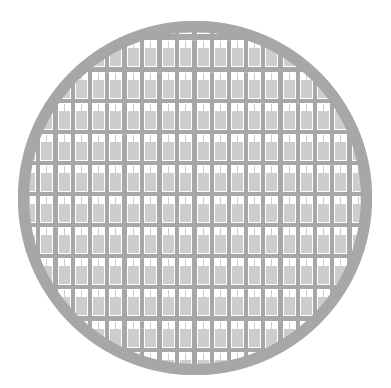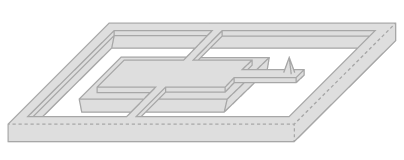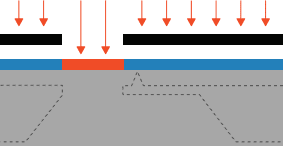
This note is a brief guide to silicon AFM probe fabrication. It is intended for those who want to learn about how AFM probes are produced and have little or no experience in the field of semiconductor technology.
Silicon AFM probes are fabricated on single crystal silicon wafers. The wafers are patterned in a micromachining process in order to obtain the desired structures. The general step sequence for one structuring step is shown below.



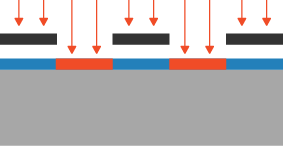





Photolithography is the general term for the technique of transferring geometric patterns from the mask to the photoresist covering the substrate surface. It includes the photoresist deposition, baking, exposition, development and stripping, as well as the related cleaning steps. Broader definitions include the thin film or substrate etching steps as well.
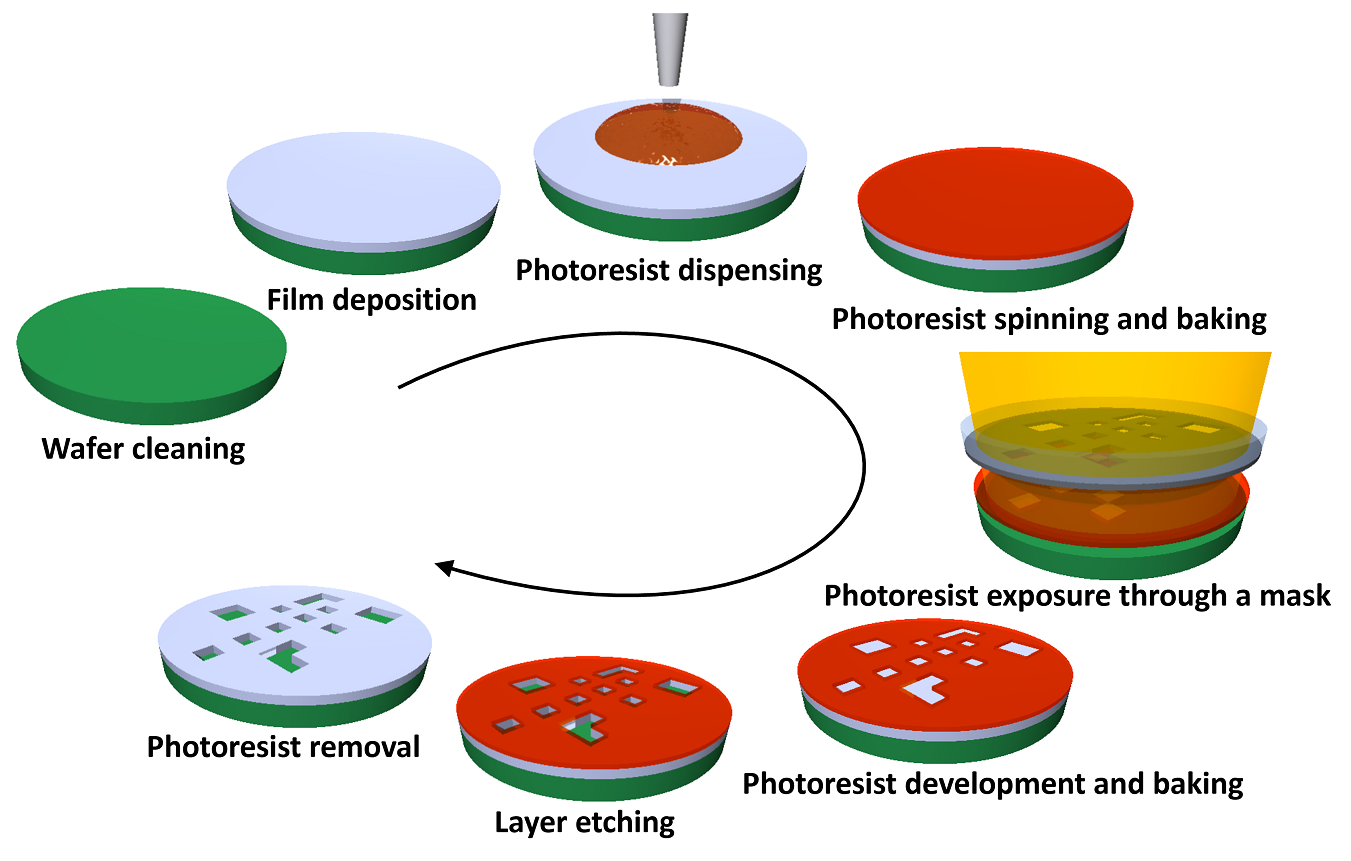
The photolithography mask features a repeatable pattern which allows transferring simultaneously a large number of identical structures on to the wafer. This makes the process much more efficient than single unit production. Usually, several hundred AFM probes are produced on a wafer.
Various cleaning steps are performed at different stages of processing. They are of immense importance to the fabrication process. Cleaning removes residual particles and chemicals from the wafer surface. As a result, defect density decreases significantly, while photoresist and layer adhesion improve significantly, both of which increase the yield.
Yield is very important in the world of microfabrication. In order to achieve high overall yields, the yields of individual steps must be orders of magnitude higher. Therefore, every single processing step must be carried out with great care and under strict control over process parameters.
The AFM probe fabrication processes vary for different AFM probe types and for different manufacturers. Different technological processes, process parameters and step sequences are applied. They have a significant impact on the final product quality and yield.
The process flow described below is a simplified version of an actual fabrication process, which consists of over 100 steps and takes a couple of months to complete.









The finished silicon wafer contains several hundred AFM probes. The AFM probes are attached to the wafer only by two small silicon bridges on each side of the holder chip. The AFM probes can be easily freed by applying a small mechanical force to the holder chip with tweezers.
